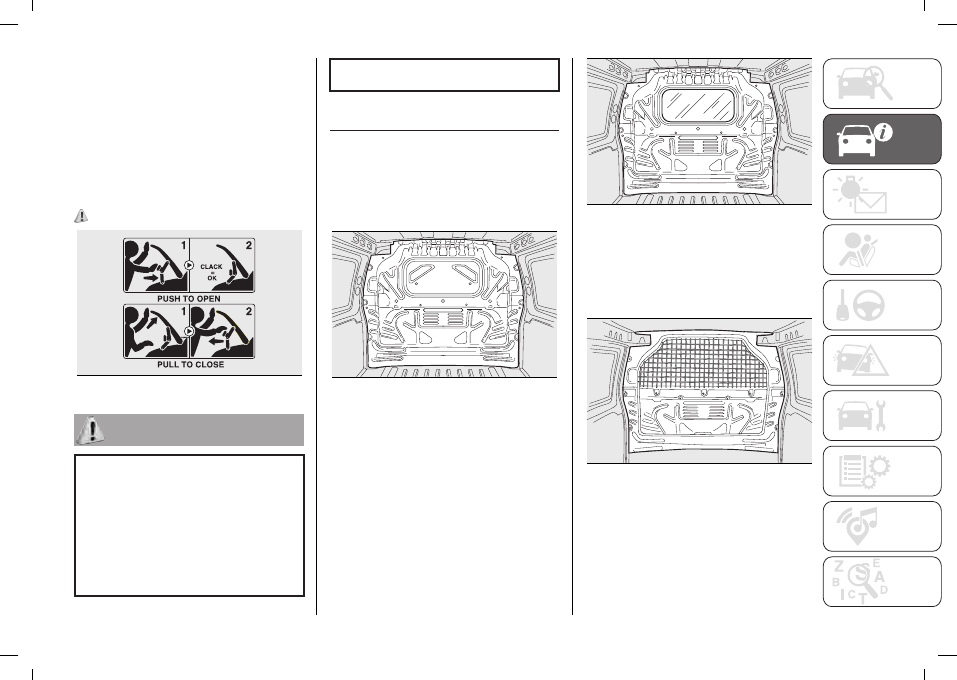Fiat Qubo (2021 year). Manual in english - page 3

43
is not perfectly closed, do not try to
press the bonnet lid down but open it
and repeat the procedure.
WARNING A plate summarising the
described bonnet opening/closing
operations is affixed under the bonnet
(see fig. 59).
25)
59
F0T0215
24)
Before opening the bonnet, make
sure that windscreen wiper arm is not
raised, but is rather positioned against the
windscreen.
25)
For safety reasons, the bonnet must
always be properly closed while driving.
Therefore, make sure that the bonnet
is properly closed and that the lock is
engaged. If you discover that the bonnet
is not perfectly closed while driving, stop
immediately and close the bonnet in the
correct manner.
PARTITIONS
(for versions/markets, where provided)
CARGO VERSIONS
Fixed partition fig. 60
Separates the passenger area from the
load compartment.
60
F0T0179
Glazed fixed partition fig. 61
This is provided with window in the
middle so you can observe load
stability.
61
F0T0167
Fixed mesh fig. 62
Separates the passenger area from the
load compartment. This is provided
with metallic mesh so you can observe
load stability.
62
F0T0059